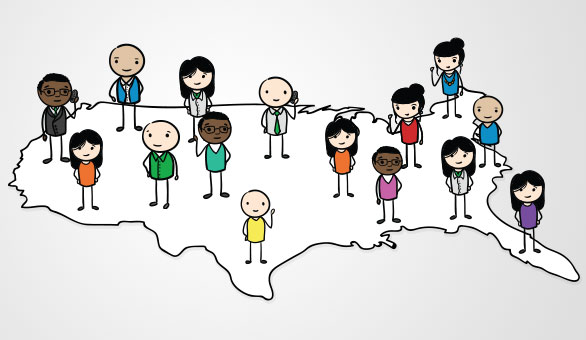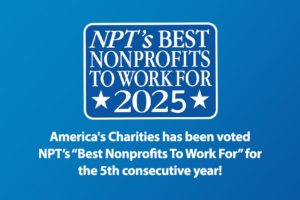Sarah Ford | October 25, 2016
Donating: How Much is Enough to Make a Difference?
By Sarah Ford
According to Thrivent Financial’s Money Mindset Report, among the biggest obstacles to giving is affordability, and about 1 in 8 Americans surveyed said it’s because they “can’t give enough to make a difference.”
This belief of not having enough to give to make a difference is similar to the argument some people make when it comes to voting. But try telling a senator who wins by 18 votes that your vote doesn’t matter and I promise they’ll give you an earful.
While it often feels like one individual’s actions doesn’t have an impact on the big picture, the truth is that we all have the power to make a difference and influence change. In fact, the majority of giving (at least 71% of total annual donations) is from individuals, which equated to roughly $264.6 billion in charitable donations in 2015. And each year, approximately $4 billion is donated by individuals through workplace giving programs, in which employees can donate to nonprofits directly from their paycheck (one of the most cost-effective ways to raise money for charities).
What difference does this make?
America’s Charities manages workplace giving campaigns for companies, and we also help our nonprofit members get listed as charitable choices for donors to support through private sector, State and local campaigns, and public workplace giving campaigns like the Combined Federal Campaign. As a result, we have access to quite a bit of data, so we’ll use the 2015 pledge results for one of America’s Charities’ members as an example. For privacy purposes we will not reveal the name of the organization, but we will share some real figures to prove the collective power of individual giving.
Through the workplace giving results we have access to, this nonprofit received nearly $300,000 as a result of donations made through 217 different workplace giving campaigns that took place in 49 states across the United States in 2015. Thousands of individual employees contributed to that $300,000. There was actually a campaign where the total amount donated to this nonprofit was less than $10. Of course, that’s not a lot of money. But what about the other campaigns? There was one campaign where the total amount donated to this nonprofit was $25, and another campaign where the total was $52. Even the campaigns where the total was in the thousands, if you look at the individual donations within those campaigns – you’re looking at small contributions donated by several employees from all across the country.
At what point is a single donation enough to make a difference? If the individuals who donated $10, $25, and $52 each decided that their donation wasn’t enough to make a difference, the 2015 pledge results for this particular nonprofit could easily have been $100,000 or $200,000 less – and ask ANY nonprofit, that is a big difference.
So whatever cause matters most to you, give as much as you can afford this year – even if it’s just $10. No matter how insignificant you think it is, your donation will be of substantial importance to those helped by that nonprofit. And once you have donated, don’t stop there. Read our blog post, “You’ve made a donation, now what?” and consider different ways you can connect with the nonprofit throughout the year to gain a better understanding of the impact your donation is having.

Get Resources and Insights Straight To Your Inbox
Explore More Articles
For Fifth Consecutive Year America’s Charities Named ‘Best Nonprofit To Work For’
Washington, D.C. – April 1, 2025 – America’s Charities, the nonprofit that mobilizes the power of giving as a leading provider of volunteering, workplace giving,…
Read ArticleWorkplace Fundraising + Volunteering Summit (April 2nd and 3rd, 2025)
Join us in attending this virtual summit! The America’s Charities team is joining up with other leading voices in the workplace giving space for a…
Read ArticleThe Time to Act is Now
The results of the 2024 National Assessment of Educational Progress (NAEP) are in, and the findings are, in a word, heartbreaking. This assessment serves as…
Read ArticleGet Resources and Insights Straight To Your Inbox
Receive our monthly/bi-monthly newsletter filled with information about causes, nonprofit impact, and topics important for corporate social responsibility and employee engagement professionals, including disaster response, workplace giving, matching gifts, employee assistance funds, volunteering, scholarship award program management, grantmaking, and other philanthropic initiatives.





